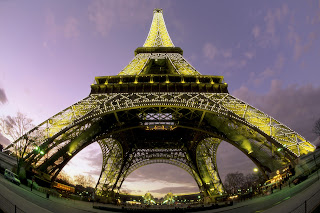Pictures/photography are unrestrained. They are non-linear. They are wild. They are true. They are objective. They are timeless. They have the immediate ability to imply meaning, and or emotion. Pictures are the definition of story telling.
Although photos are so quickly conveyed; the process of photograph is labor-intensive. It is a fine art. This brings we to the question; what make a good photograph? Great photography understands image structure. Anyone can take photos, but professionals understand the compositional order needed to grab the attention of the eye. Here are the most important facts to remember, when trying to get the perfect shot.
- Framing. The framing of a photograph should be obvious. It should emphasize your subject; making the focus of the photograph easy to distinguish. Here are some great examples.
- Focus. Nobody wants to look as a blurry photograph. Similarly, nobody wants to look at a photograph of nothing. Photographs need clarity and subject.
- Angle and Point-of-View. Angle and point-of-view imply meaning into your photograph. If you have a photo of a politician, the angle is often from below. This gives the impression of power and superiority.
- Exposure. Possibly the most important of them all. Even if your subject is sensational, the photograph will be rubbish if you don’t get the right exposure (or light). Light is used to attract you to the image… and it works.
- Timing/Shutter speed. This controls how much expose you let into your photograph.
- Capturing “the moment.” This goes without saying. Timing is everything.
 |
- The rule of thirds. The Digital PhotographySchool defines the rule of thirds as “The basic principle behind the rule of thirds is to imagine breaking an image down into thirds (both horizontally and vertically) so that you have 9 parts. The theory is that if you place points of interest in the intersections or along the lines that your photo becomes more balanced and will enable a viewer of the image to interact with it more naturally. Studies have shown that when viewing images that people’s eyes usually go to one of the intersection points most naturally rather than the center of the shot – using the rule of thirds works with this natural way of viewing an image rather than working against it.”
The idea that pictures can tell stories is not a new phenomenon. 40000 years ago Australian Aboriginal peoples used cave paintings as a form of communication, and as an element of beauty. This could essentially be seen as the first example of visual communication. Religiously, pictures were used to tell the stores of the Bible. The prime example is possibly stained glass windows, which reveal valuable religious lessons just from looking at them.
In the 1860’s, line drawings first emerged. Just seventeen years later the first photograph (halftone image) was published. This was where photojournalism began. Nowadays, photojournalism an editing process, which allows modification beyond recognition. May I please introduce, Photoshop.
Photoshop is a professional image altering computer software. Photoshop always you to edit your photographs to such a manor, it often gets bad press. It can create a fantasy, and often be very misleading.
Possibly Photoshop’s greatest downfall is the ability to modify people’s appearances. I, as a teenage girl, believe this modification is is incredibly detrimental to one’s self esteem. How could my skin ever be this clear, or my body be this thin?
Is this what pictures are turning into? Falsifications? Remember I said before, that photography reveals true. Yeah. Well. That hurts. Is this just another example of the demise of journalism? We are living in an increasingly superficial world, in which ‘truth’ is hard to find.
What's so ridiculously beautiful about these pictures? One word... Truth.























No comments:
Post a Comment